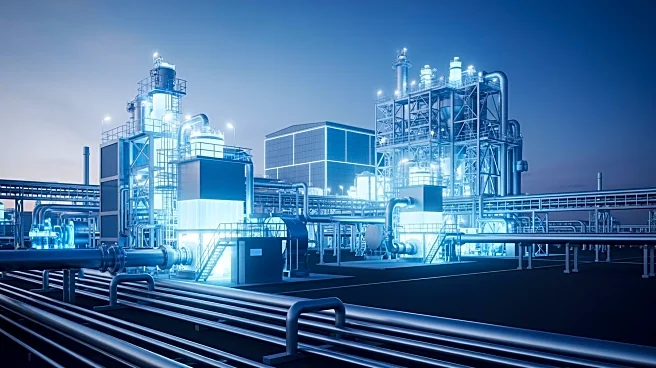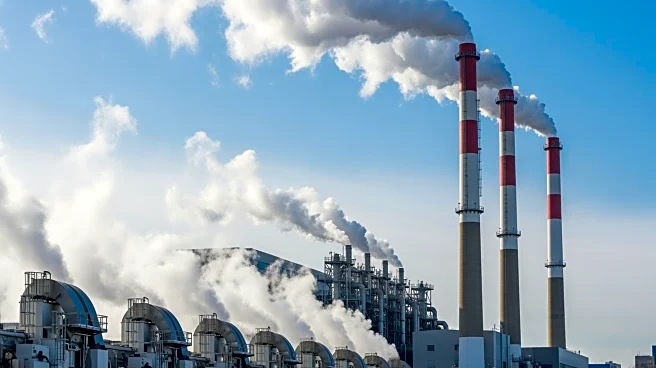What's Happening?
Eurasian Resources Group (ERG) has entered into a strategic agreement with Primetals Technologies and Midrex Technologies, Inc. to construct Kazakhstan's first hot briquetted iron (HBI) plant. This facility,
set to be one of the largest metallurgy plants in Central Asia, will utilize advanced direct reduction iron (DRI) technologies through the MIDREX Process. The plant is designed to produce HBI with a metallisation degree of at least 93.5% and an iron content of approximately 90%. Scheduled for commissioning in 2029, the plant will initially use natural gas, with plans to transition to hydrogen when feasible. The project, with an investment exceeding $1.2 billion, aims to create over 1,000 jobs and enhance Kazakhstan's export potential.
Why It's Important?
The development of Kazakhstan's first HBI plant marks a significant step in modernizing the country's metal industry and expanding its global market presence. By adopting the MIDREX Process, the plant will significantly reduce carbon emissions compared to traditional blast furnace methods, aligning with global sustainability goals. This project not only promises economic benefits through job creation and increased export capacity but also positions Kazakhstan as a key player in the sustainable steelmaking industry. The involvement of industry leaders like Primetals and Midrex underscores the project's potential to drive technological advancement and economic growth in the region.
What's Next?
As the project progresses towards its 2029 commissioning, stakeholders will likely focus on the seamless integration of hydrogen utilization to further reduce emissions. The successful implementation of this technology could set a precedent for future metallurgy projects in the region. Additionally, the plant's development may attract further investments in Kazakhstan's industrial sector, potentially leading to more infrastructure projects and economic diversification. Monitoring the project's impact on local employment and skill development will be crucial in assessing its long-term benefits.
Beyond the Headlines
The establishment of this HBI plant could have broader implications for the global steel industry, particularly in terms of environmental standards and technological innovation. As countries strive to meet climate targets, the success of this project may encourage other nations to adopt similar technologies, potentially leading to a shift in global steel production practices. Furthermore, the project's focus on reducing carbon emissions aligns with international efforts to combat climate change, highlighting the role of industry in achieving environmental sustainability.











